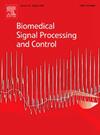EMCNN:基于多尺度卷积神经网络的PPG细粒度情绪识别
IF 4.9
2区 医学
Q1 ENGINEERING, BIOMEDICAL
引用次数: 0
摘要
生理电信号的客观性质,不易受人为操纵,促进了其在情感计算领域的应用。然而,现有的方法大多依赖于多通道或多模态信号,在日常设置中收集起来很麻烦,从而限制了它们的实际应用。在本文中,我们提出了一种基于光体积脉搏波(PPG)的情绪识别方法,该方法利用单通道信号进行细粒度的情绪分析。针对PPG信号固有的简单性,提出了一种情感多尺度卷积神经网络(EMCNN),通过整合时域和频域信息来丰富元数据,从而提高特征提取能力。此外,除了在效价或唤醒方面的二元分类任务外,还考虑了四维分类任务来实现细粒度的情绪识别。在DEAP数据集上的实验表明,该方法对二元价态、二元唤醒和四维分类的准确率分别达到94.2%、94.0%和86.1%。此外,当在自收集数据集上进行测试时,它表现出显著的泛化能力,取得了可观的性能。基于ppg的细粒度情绪识别的成功实施,不仅将促进非侵入式可穿戴情绪监测的发展,也将为临床应用铺平道路。本文章由计算机程序翻译,如有差异,请以英文原文为准。
EMCNN: Fine-Grained Emotion Recognition based on PPG using Multi-scale Convolutional Neural Network
The objective nature of physiological electrical signals, which is not susceptible to human manipulation, promotes their application in the field of affective computing. However, most of the existing methods rely on multi-channel or multi-modal signals, which are cumbersome to collect in daily settings, thus limiting their practical application. In this paper, we proposed a photoplethysmography (PPG) based emotion recognition approach that leverages a single-channel signal for fine-grained emotion analysis. To address the inherent simplicity of the PPG signal, an Emotional Multi-scale Convolutional Neural Network (EMCNN) is presented to enrich the metadata by integrating information from both time and frequency domains, thereby enhancing the ability of feature extraction. Moreover, in addition to the binary classification task regarding the aspect of valence or arousal, the 4-dimensional classification task is also considered to achieve fine-grained emotion recognition. Experiments on the DEAP dataset demonstrate that the proposed method obtained outstanding accuracy of 94.2%, 94.0%, and 86.1%, for the binary valence, binary arousal, and 4-dimensional classification, respectively. Furthermore, it exhibits significant generalization ability in achieving considerable performance when tested on the self-collected dataset. The successful implementation of fine-grained PPG-based emotion recognition will not only facilitate the development of non-invasive wearable emotion monitoring but also paves the way for clinical applications.
求助全文
通过发布文献求助,成功后即可免费获取论文全文。
去求助
来源期刊

Biomedical Signal Processing and Control
工程技术-工程:生物医学
CiteScore
9.80
自引率
13.70%
发文量
822
审稿时长
4 months
期刊介绍:
Biomedical Signal Processing and Control aims to provide a cross-disciplinary international forum for the interchange of information on research in the measurement and analysis of signals and images in clinical medicine and the biological sciences. Emphasis is placed on contributions dealing with the practical, applications-led research on the use of methods and devices in clinical diagnosis, patient monitoring and management.
Biomedical Signal Processing and Control reflects the main areas in which these methods are being used and developed at the interface of both engineering and clinical science. The scope of the journal is defined to include relevant review papers, technical notes, short communications and letters. Tutorial papers and special issues will also be published.
 求助内容:
求助内容: 应助结果提醒方式:
应助结果提醒方式:


